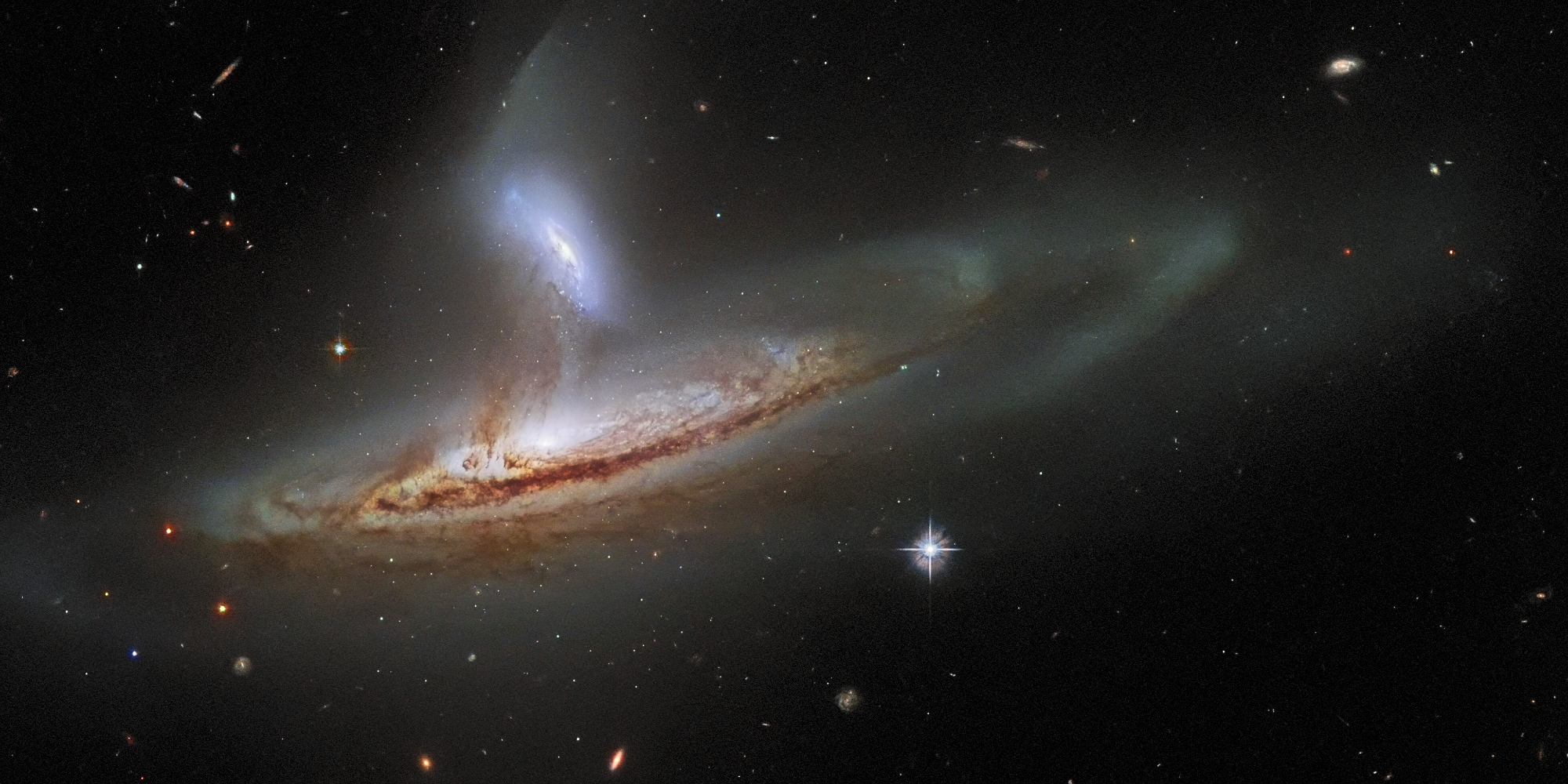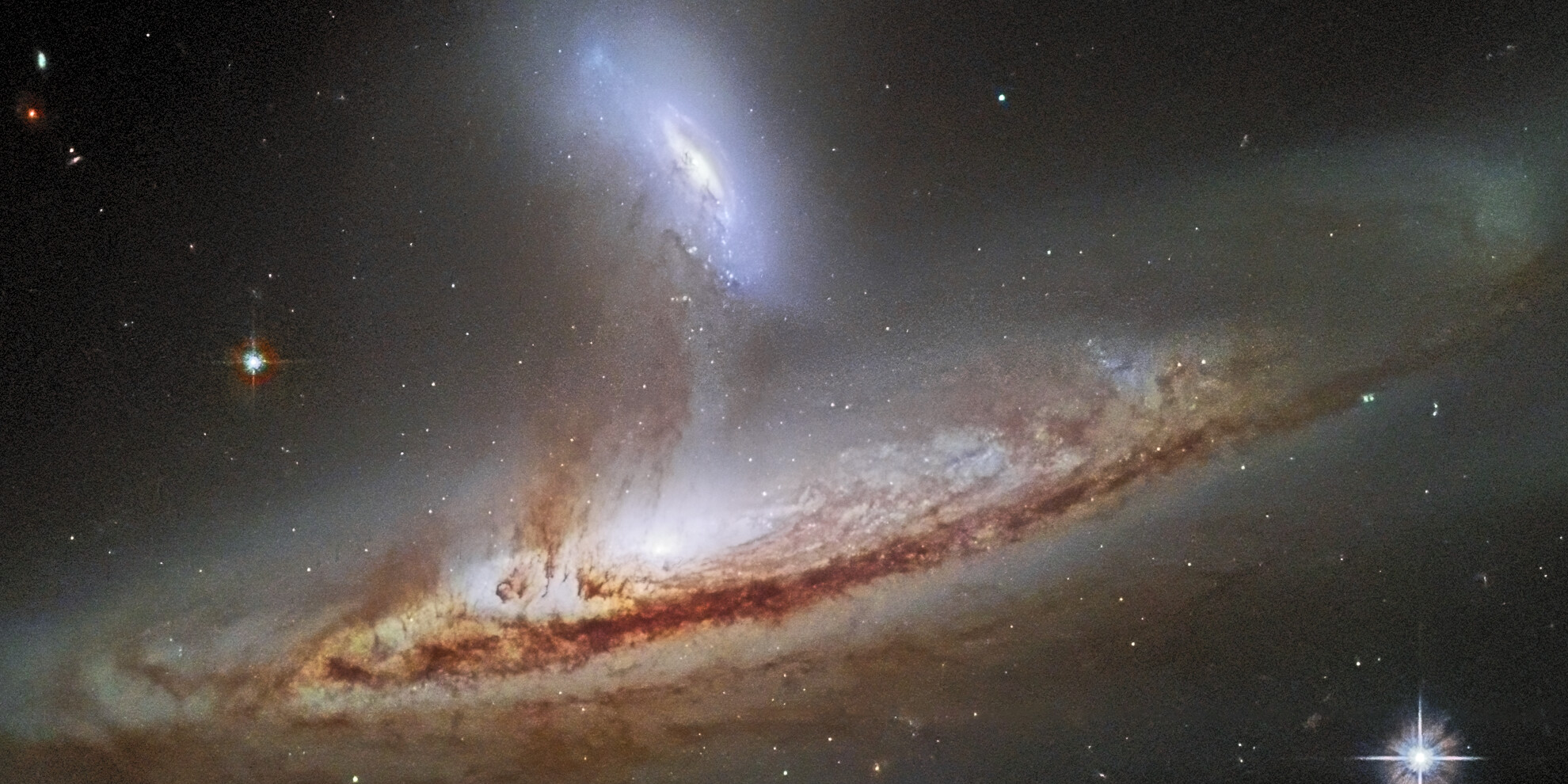NASA regularly uses Hubble to examine the wonders of outer space, and in the latest Hubble photo it's sharing, NASA reveals a rare sight of two galaxies appearing to 'dance' with one another. For all the years astronomers have spent looking at the sky above, there are still things about the universe that make it endlessly fascinating. Strange new planets are discovered, bizarre galaxies appear, and it's a neverending quest of finding new mysteries to unravel.
Behind many of these discoveries is Hubble. Although it's far from the newest instrument for space exploration, Hubble continues to play a critical role in the industry. It's helped scientists determine the universe's age, reveal key information about our own Solar System, and has uncovered jaw-dropping galaxies millions of light-years away from Earth.
NASA publishes a new Hubble photo every Friday, and on February 11, the organization shared the above picture. What you're looking at are two galaxies — including NGC 169 (the large galaxy on the bottom) and IC 1559 (the smaller galaxy above it). Together the two galaxies are known as Arp 282, and as you can see, they create a pretty fascinating sight. IC 1559 looks like it's dangling above NGC 169, with some of NGC 169's cosmic dust holding onto IC 1559 and appearing to drag it through the cosmos. In fact, it looks like the two galaxies are dancing with each other with a crowd of distant stars there to cheer them on.
A Closer Look At These Two Gorgeous Galaxies
While these two galaxies aren't actually dancing with each other, the science behind them is still quite fascinating. NASA explains that both NGC 169 and IC 1559 have 'monumentally energetic cores' — also known as active galactic nuclei. Hubble's image doesn't showcase the full emissions of those nuclei, because if it did, "their brilliance would obscure the beautifully detailed tidal interactions we see in this image."
As for what's creating those tidal interactions, this happens whenever the gravity of one object causes another object to stretch/distort. Specifically, those tidal forces move away from the lower-mass object and towards the higher-mass one. Such is the case with two galaxies like NGC 169 and IC 1559. Since NGC 169 is much bigger than IC 1559, it's pulling in its gas, dust, and other materials (hence the line of dust connecting the two in the photo).
While interacting galaxies are a fairly common occurrence in space, NASA says it's still rare to "capture an image of two galaxies interacting in such a visibly dynamic way." And that's precisely why Hubble remains such an important tool. It may not be the most advanced telescope in 2022, but it's still able to churn out amazing pictures that otherwise wouldn't exist.
Source: NASA


